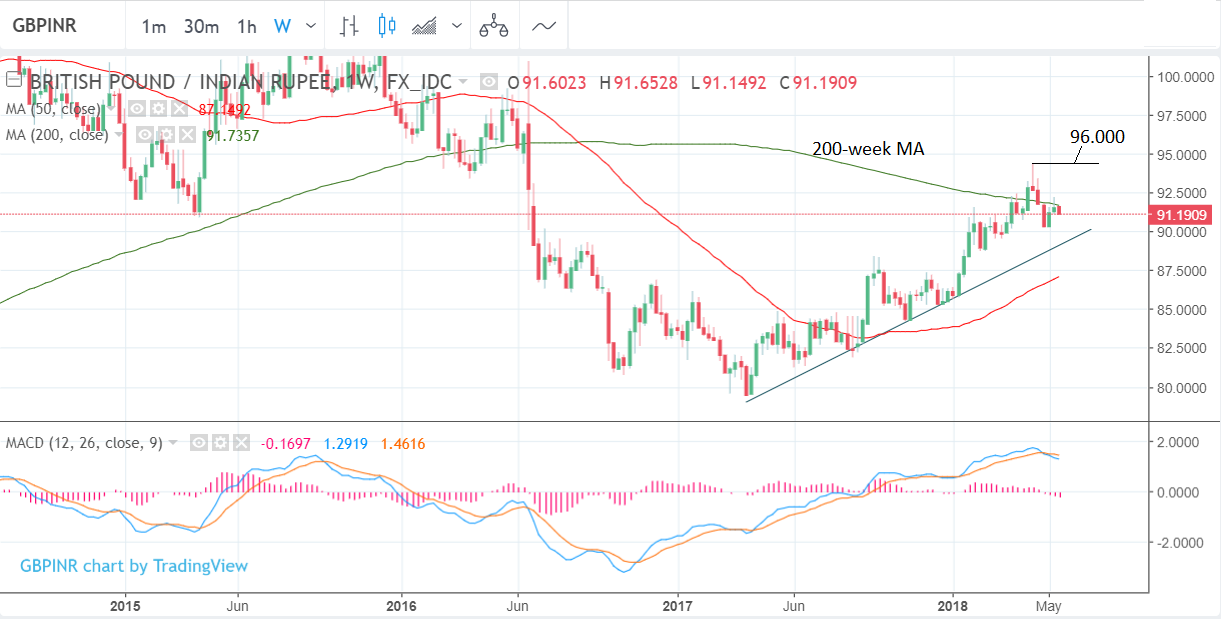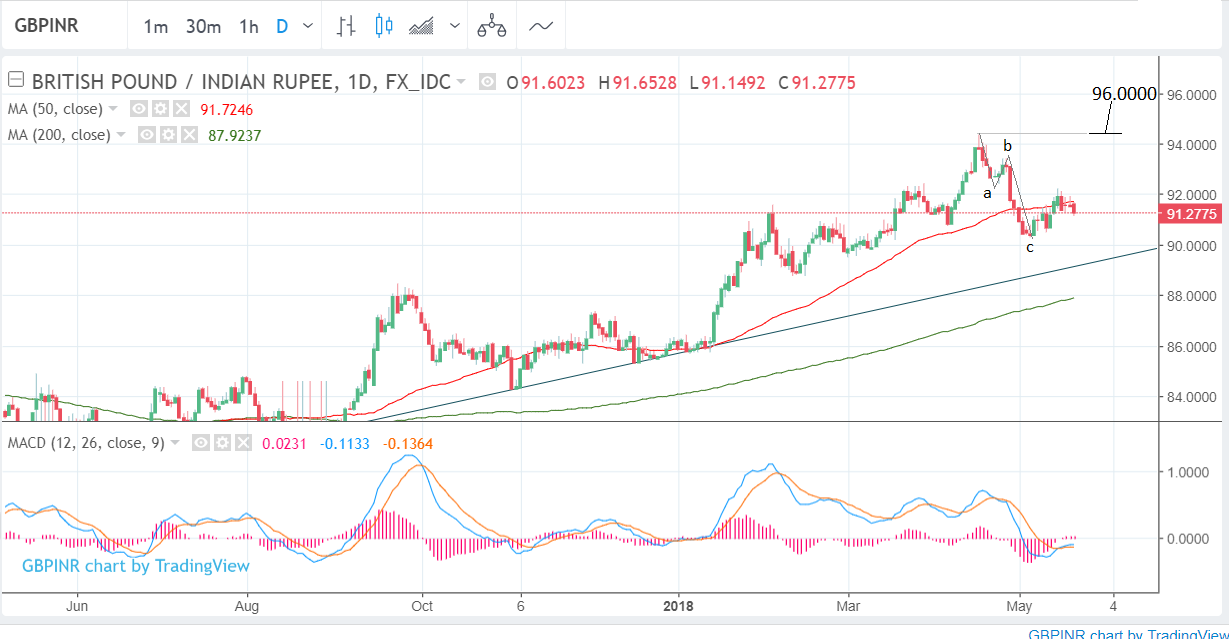The Pound-to-Indian Rupee Rate's Forecast For The Week Ahead
- GBP/INR has pulled back in the midst of a medium term uptrend
- The main release in the week ahead for the Pound is retail sales data on Thursday
- The Rupee sees the release of bank loan growth, deposit growth and reserves on Friday

© Chris Titze Imaging, Adobe Stock
The GBP/INR exchange rate is almost completely unchanged from the week before as it trades at 91.30 on the interbank market, only marginally higher than the 91.24 of the previous week.
The Rupee is subject to a push-pull effect from different cross-currents. A positive driver is higher core inflation which will probably make the Reserve Bank of India (RBI) raise interest rates, which will have the effect of appreciating the currency. A negative driver is the rising price of oil which India has to import in large quantities, and has now risen over 80 Dollars a barrel. ]
From a technical perspective, the charts are showing GBP/INR in an uptrend in the medium-term. Despite bearish signs, the uptrend remains intact and therefore likely to continue. Because of the bearish indicators, we would be looking for a high bar for confirmation the trend was extending higher, and ideally, wish to see the pair break clearly above the 94.34, April 17, highs.
Assuming that is the case we see a possibility of an extension up to a target at 96.00.
A possible further sign the uptrend is set to extend is that the move down from the April highs has formed a three-wave correction, known as an abc pattern, visible on the daily chart (see below), which usually signals a pull-back before the uptrend resumes, rather than a reversal down. If the move down really is an abc it suggests the exchange rate is likely to eventually extend higher.
INR: What to Watch
The Rupee is likely to be impacted more by macro-factors in the week ahead rather than domestic data.
One major driver is the price of oil, so Rupee traders should keep their eye on the changing price of oil. Higher oil prices tend to be a dampener on the currency as India has to import most of its fuel. The global outlook favours a continuation higher after OPEC stated recently that market supply and demand have now almost returned to equilibrium.
As already mentioned above, core inflation is rising in India which has increased the chances the RBI may raise interest rates. Any sort of commentary from the RBI suggesting a rate hike may be on the cards, could, therefore, also impact on the exchange rate, as higher interest rates attract foreign capital inflows by promising a high return.
From a hard data perspective, the main releases are on Friday, May 25, when bank loan growth, foreign reserves and deposit growth from the week ending May 12 are released.
GBP: What to Watch
It's a busy week ahead for Sterling traders, with a welter of economic releases due for the Pound.
Inflation data, out at 9.30 on Wednesday, forms the main data event with traders looking to see whether prices are moving in a direction consistent with further interest rate rises at the Bank of England. Over recent months we have seen the Pound become increasingly attuned to Bank of England interest rate expectations; moving higher when expectations for a rate rise increase, and moving lower when those expectations are rowed back.
We recently reported that economists at Capital Economics are expecting two interest rate rises in 2018 which would present a highly bullish outcome for Sterling, but the data will have to start moving in the right direction very soon for this assumption to prove correct.
And of course, the Bank of England is watching the data and will only move on rates once they have evidence the economy is picking up the pace once more.
"UK inflation figures from April will be closely watched by markets and influence the pricing of Bank of England," says Andreas Steno Larsen, a strategist at Nordea Bank.
Inflation is expected to fall to 2.1% from 2.3% as base effects from the weak Pound start to fall away.
"As for April there is a clear risk of a rather low result due to base effects," adds Larsen.
Analysts at Investec are more bullish about inflation in April:
"We expect to see inflation tick up to 2.6% from 2.5%, albeit with the April rise likely to be a blip on a path in which we see inflation moderating," says Investec economist Victoria Clarke.
Global oil prices have been on the rise, and we would expect this to perhaps deliver an upside surprise. However, the core CPI release will, therefore, be crucial as it strips out the likes of external one-offs like oil, and the Bank of England uses the number as a proxy for underlying wage growth. In short, a beat on the core CPI would likely help Sterling higher, core is forecast to read at 0.5%.
In other UK releases, retail sales figures due Thursday morning will also be closely watched amidst concerns about UK growth (and consumer spending) momentum.
The BRC’s April figures were particularly weak, with the timing of Easter a depressing factor; we suspect the ONS’s Easter timing adjusted numbers will not look quite so gloomy.
The second estimate for UK GDP growth is due at the end of the week where Clarke suspects we will see an unrevised reading of +0.1% print. A beat would however likely boost Sterling.
Right at the beginning of the week, we get some second-tier numbers with public sector finances released at 9.30, they are expected to show government borrowing fall by 7.0bn in April. Recent public sector data has been positive on the whole so a further fall in borrowing would be seen as a positive for the economy, although a surprise reading, either way, would probably be necessary to move the Pound.
The Consortium of British Industry will also be releasing two reports for the month of May: the CBI Industrial Trends survey at 11.00 GMT on Monday and the Distributive Trades survey at the same time on Wednesday. Both will provide the most up-to-date information on economic activity in the UK and could, because of their timeliness, impact on Sterling.
Get up to 5% more foreign exchange by using a specialist provider to get closer to the real market rate and avoid the gaping spreads charged by your bank when providing currency. Learn more here.








